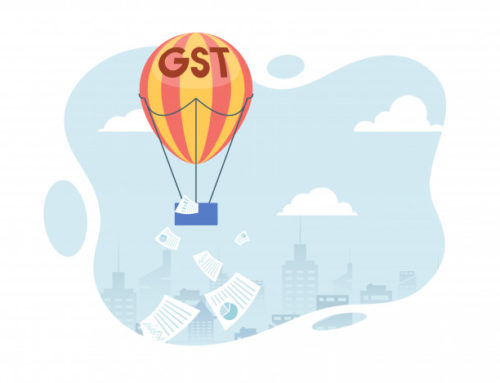Impact of GST: Textile Industries
Textile Industries are one of the most important contributor in growth of India. This industries contribute to more than 10% of GDP and is responsible for excess employment as its more manpower nature of business. Today textile industries provide most of the employment. It contributes about 10% of the total annual export,and it will grow under GST. GST would affect the cotton value chain of the textile industry including all garments for men and women like shirts, trousers, saree, apparels, shoes and any more clothing materials which is chosen by most SME’s as currently it has zero Central Excise Duty (under optional route).
Currently, Textile Industries is worth $108 Billion and it might reach upto $221 Billion . This industries has extreme potential to reach upto $500 Billion. Implementation of GST will influence this prominent economic sector by changing the existing indirect tax slabs.

Impacts on GST:
1) Revamp in Input Tax Credit :
Most parts of the Indian textile industry operates under the unorganized sector. It creates a gap in the input tax credit system. If the registered taxpayers buy inputs from the unorganized sector, they can not avail input tax credit facility. GST would enable a balanced input credit system, which would shift the balance towards the organized sector.GST on textile will bring a significant change in the input tax credit system and it will create an important balance between organized and unorganized sectors of the industry. In fact, entire industry would move towards Organized Sector.
2) Reduction in Manufacturing Cost:
GST as a one nation one tax will undermine several taxes like Entry tax, Octroi tax, Luxury tax. As a result, It will lower the manufacturing cost, this will ultimately earn profits to textile manufacturers by contributing to Indian Economy.
3) Input Credit System allowance on Capital Goods:
Presently the importing cost latest technology for manufacturing textile goods is expensive as excise duty paid is not covered under Input Tax Credit. As GST launches the excise duty will have input tax credit facility and it will decrease the total import cost for capital goods.
4) Increase in Textile Market Competition:
GST will restructure the input tax credit claiming process. It will make the entire textile industry more aggressive in the export market. – Prabhu Dhamodharan
Input tax credit will be a changing steps for promoting the exports of textile products. Additionally, It will encourage the manufacturers to adopt cutting-edge production system to develop products and therefore increasing the competition in market.
5) Farmers Encouragement:
As the production rises, demand is tend to shown increase. As a result to meet demand the farmer will increase cotton production which will earn them a good profit. Cotton yarn and fabrics will come under 5% GST tax slab, The farmers will get the accurate price for their hard work.
6) Ready Garments will be expensive:
GST will ensure huge difference in current consumption. The tax will be 12%, while current tax slab is 4-5% VAT+ 2% Excise. The higher tax change will soar the rates of ready-made garments as a result.
GST Tax Slabs for Cotton Products
GST Rates & HSN Codes For Cotton Products like- Dhoti, Saree, Zari Border Saree, Zari Border Dhoti, Shirting, Casement, Viol, Sheeting, Suti, Cambric, Lawn, Latha, Lungi & furnishing fabrics.
| Cotton Composition | HSN | GST Tax Rate |
|---|---|---|
| 85% Cotton content & weight: <200gm/ sq. mtr | 5208 | 5% |
| 85% Cotton content & weight: >200gm/ sq. mtr | 5209 | 5% |
| Products with less than 85% cotton content, mixed with additional fabrics & weight is less than 200 gm/sq mtr | 5210 | 5% |
| Products with less than 85% cotton content, mixed with additional fabrics & weight is greater than 200 gm/sq mtr | 5211 | 5% |
| Others | 5212 | 5% |
GST Rates & HSN Codes For Synthetic Filament Yarn Products like- Parachute Fabrics, Tent Fabrics, Nylon Furnishing, Umbrella cloth, Polyester Shooting, Polyester Shirting, Other polyester cloth, Nylon Brasso, Nylon jacket, Nylon saree, Terylene saree, Dacron saree, Rayon Crepe, Rayon jackets, Rayon saree, Rayon shirting & Rayon brocade.
| Yarn Specification | HSN Code | GST Rate |
|---|---|---|
| Synthetic Mono filament of 67 Decitex or more and cross sectional dimensions <1 mm; & width < 5 mm. | 5407 | 5% |
| Artificial Mono filament of 67 Decitex or more and cross sectional dimensions <1 mm; & width < 5 mm. | 5408 | 5% |
* Table Data: Cleartax.in
Conclusion:
Due to high Tax rate and removing benefits under cotton chain, there maybe few drawbacks for textile industry, but in the long run GST will help this industry in long run by organizing tax payers under well maintained system. GST will help the textile industry to get more competitive in both the global and domestic markets and create opportunities for sustainable, long-term growth.




